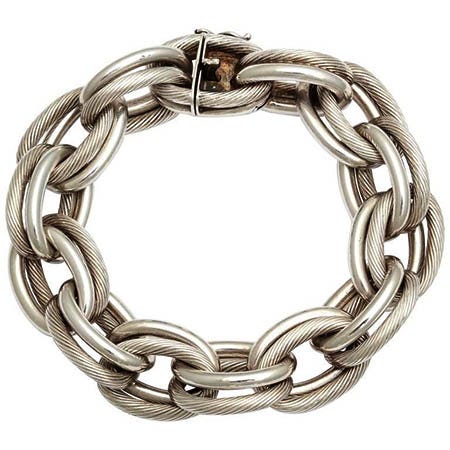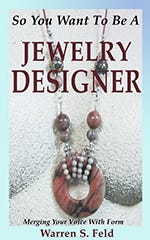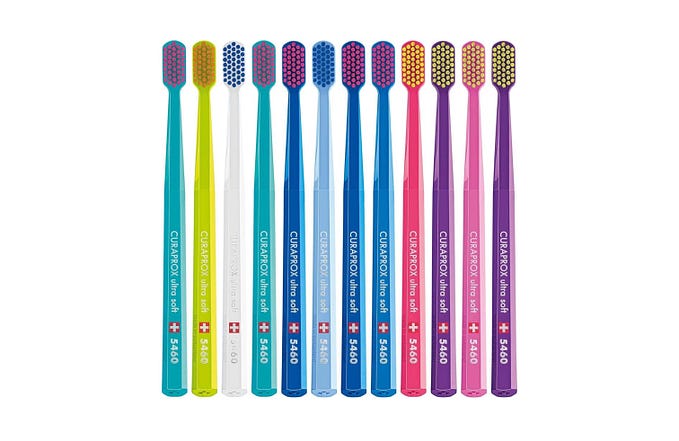Cleaning Sterling Silver Jewelry: What Works!

CLEANING STERLING SILVER JEWELRY: What Works!
It always amazes me about how many people (studies show that 25% of the population) think that when their sterling silver jewelry turns black, it’s Dead and they throw it out. So, especially if you are selling your stuff, you always need to educate people about cleaning sterling silver.
Sterling Silver tarnishes from the interaction of silver and sulfides in the air. First the tarnish will take on a golden hue, and eventually, it will turn the piece black. This is a natural process.
Higher sulfide levels are associated with humidity and/or pollution. Remember, the more humid the climate, the faster sterling will tarnish. On a summer day in Miami, Florida, all you have to do is walk out the door and the sterling starts turning black very quickly.

Sterling Silver will polish up by rubbing or buffing it with a soft cotton cloth. The best cloth to use is a piece of denim. Yes, rub it on your pants.

Jewelry stores either sell or give away what is called a Rouge Cloth. This is a little bit gimmicky, in that what is taking the tarnish off is the rubbing, not the rouge. In most cases, denim works better. Both denim and the rouge cloth are 100% cotton. Denim has ridges on it. The rouge cloth is smooth.
The ridges of the denim get inside the links on chains. The ridges get into the crevices in your jewelry. The rouge cloth is terrible for chains. However, if you want the crevices in your jewelry to remain black, the rouge cloth, which is a smooth surface, will work better.

You might also invest in what is called a Sunshine Cloth. Many bead stores and jewelry stores sell these. The Sunshine Cloth has a chemical in it that eats the tarnish but does not harm gemstones. And that’s its greatest selling point — it does not harm gemstones.

Sterling Silver dips are fast and easy, but are not the best choices here. Ideally you would never use a dip, or only use a dip in an emergency. First, many dips will take the color and the polish off many gemstones. Second, the dips work by pulling silver out your jewelry and creating a silver salt. The salt is usually white, sometimes black. This salt or residue gets caught inside the links of chains. It gets caught in the crevices in your jewelry. It is difficult to pick it out.
If you do have to use a dip, the way you use this dip is that you take your piece of jewelry, and put it in, and immediately take it out and rinse it off. If not clean enough, repeat. Never leave your jewelry in the dip. Then buff your jewelry with a soft cotton cloth. The buffing brings out more of the shine, and helps take off any residue left on the piece.

Most silver polishes do not work well with sterling silver jewelry. Repeated uses usually cut the shine and leave a white color to the sterling silver in jewelry. They primarily are used for silver plated kitchen ware and utensils. One exception, which I like, is Tarni-Shield — a silicon polish. Tarni-Shield will keep the piece of jewelry shiny until the shield wears off. We primarily us this product when we make a lot of jewelry that has to be on display for a long time, such as when we’re selling our pieces at an arts and crafts fair.

There are lacquer dips which coat your jewelry in order to keep the shine. (This is similar to painting clear nail polish on your jewelry). The lacquer, however, wears off unevenly, allowing some places to tarnish and others not. As the lacquer coating loosens in some areas, the silver will tarnish underneath it, but this area will still be inaccessible to your polishing cloth, until that lacquer actually chips or peels off. This can leave your pieces unsightly. If the piece is a chain, or a filigree, the lacquer will form a film within the openings and cracks. This obviously makes the piece ugly.

If you have some heavy duty tarnishing to deal with, then the easiest thing to do is to make a paste of baking soda and warm water, use a soft bristle toothbrush and scrub and rinse.
Even dry baking soda will take the tarnish off. You ruby your jewelry back and forth into a pile of dry baking soda, then use a cosmetic brush to pat the jewelry to get the powder off.
The effects of the baking sod, whether dry or as a paste, are almost instantaneous. You can also use baking powder. You can use baking soda toothpaste. If you have a large tea-pot, you can make a dip instead of a paste.
Some people sell set-ups using baking soda and tin foil, or baking soda and a sonic bath. These are gimmicks. What’s taking the tarnish off is the baking soda. That’s all you need.

Some Additional Advice
Never use a cleaner with ammonia or sulphur in it.
Sterling Silver is best stored in an air-tight, zip lock plastic bag, and in a drawer or somewhere out of the light. When you put the silver into the plastic bag, be sure to push out all the air before sealing the bag.
[Note: Sometimes you can restore that oily polished look on gemstones by rubbing them with men’s black shoe wax.]

~~~~~~~~~~~~~~~~~~~~~~~~~~~~~
SUBSCRIBE
**Be part of a community of jewelry designers who recognize that we have a different way of thinking and doing than other types of crafters or artists.
Engage with a community. Benefit from its collective power — insights, reactions, feedback, foresight, and directing you to opportunities.
Never miss an update. You won’t have to worry about missing anything. Every new article of interest, and announcements about kits, workshops and webinars, chat group, feedback session, and special promotions, goes directly to your inbox.
~~~~~~~~~~~~~~~~~~~~~~~~~~~~~
Other Articles of Interest by Warren Feld:
Cleaning Sterling Silver Jewelry: What Works!
What Glue Should I Use When Making Jewelry?
Why Am I So Addicted To Beads?
A Very Abbreviated, But Not Totally Fractured, History of Beads
The Martha Stewart Beaded Wreath Project
When Choosing Colors Has You Down, Check Out The Magic Of Simultaneity Effects
The Use of Armature In Jewelry: Legitimate or Not?
Organizing Your Craft Workspace…Some Smart Pointers
You Don’t Choose Clasps, You Choose Clasp Assemblies
Know Your Anatomy Of A Necklace
Mini Lesson: Making Stretchy Bracelets
Mini Lesson: Making Adjustable Slip Knots With Thicker Cords
Mini Lesson: Attaching End Caps, Cones, Crimp Ends
Mini Lesson: Flat Even Count Peyote
Mini Lesson: Right Angle Weave
Everyone Has A Getting Started Story
The Nature-Inspired Creations of Kathleen
The Jewelry Designer’s Orientation To Glass Beads
The Jewelry Designer’s Orientation To Lampwork Beads
The Jewelry Designer’s Orientation To Crystal Beads
The Jewelry Designer’s Orientation To Seed and Cylinder Beads
The Jewelry Designer’s Orientation To Choosing and Using Clasps
I hope you found this article useful. Be sure to click the CLAP HANDS icon at the bottom of this article.
Also, check out my website (www.warrenfeldjewelry.com).
Subscribe to my Learn To Bead blog (https://blog.landofodds.com).
Visit Land of Odds online (https://www.landofodds.com)for all your jewelry making supplies.
Enroll in my jewelry design and business of craft video tutorials online.
Add your name to my email list.
__________________________________
CONQUERING THE CREATIVE MARKETPLACE: Between the Fickleness of Business and the Pursuit of Design

How dreams are made
between the fickleness of business
and the pursuit of jewelry design
This guidebook is a must-have for anyone serious about making money selling jewelry. I focus on straightforward, workable strategies for integrating business practices with the creative design process. These strategies make balancing your creative self with your productive self easier and more fluid.
Based both on the creation and development of my own jewelry design business, as well as teaching countless students over the past 35+ years about business and craft, I address what should be some of your key concerns and uncertainties. I help you plan your road map.
Whether you are a hobbyist or a self-supporting business, success as a jewelry designer involves many things to think about, know and do. I share with you the kinds of things it takes to start your own jewelry business, run it, anticipate risks and rewards, and lead it to a level of success you feel is right for you, including
· Getting Started: Naming business, identifying resources, protecting intellectual property
· Financial Management: basic accounting, break even analysis, understanding risk-reward-return on investment, inventory management
· Product Development: identifying target market, specifying product attributes, developing jewelry line, production, distribution, pricing, launching
· Marketing, Promoting, Branding: competitor analysis, developing message, establishing emotional connections to your products, social media marketing
· Selling: linking product to buyer among many venues, such as store, department store, online, trunk show, home show, trade show, sales reps and showrooms, catalogs, TV shopping, galleries, advertising, cold calling, making the pitch
· Resiliency: building business, professional and psychological resiliency
· Professional Responsibilities: preparing artist statement, portfolio, look book, resume, biographical sketch, profile, FAQ, self-care
548pp.
SO YOU WANT TO BE A JEWELRY DESIGNER
Merging Your Voice With Form

So You Want To Be A Jewelry Designer reinterprets how to apply techniques and modify art theories from the Jewelry Designer’s perspective. To go beyond craft, the jewelry designer needs to become literate in this discipline called Jewelry Design. Literacy means understanding how to answer the question: Why do some pieces of jewelry draw your attention, and others do not? How to develop the authentic, creative self, someone who is fluent, flexible and original. How to gain the necessary design skills and be able to apply them, whether the situation is familiar or not.
588pp, many images and diagrams Ebook , Kindle or Print formats
The Jewelry Journey Podcast
“Building Jewelry That Works: Why Jewelry Design Is Like Architecture”
Podcast, Part 1
Podcast, Part 2
PEARL KNOTTING…Warren’s Way
Easy. Simple. No tools. Anyone Can Do!

I developed a nontraditional technique which does not use tools because I found tools get in the way of tying good and well-positioned knots. I decided to bring two cords through the bead to minimize any negative effects resulting from the pearl rotating around the cord. I only have you glue one knot in the piece. I use a simple overhand knot which is easily centered. I developed a rule for choosing the thickness of your bead cord. I lay out different steps for starting and ending a piece, based on how you want to attach the piece to your clasp assembly.
184pp, many images and diagrams Ebook, Kindle or Print
SO YOU WANT TO DO CRAFT SHOWS:16 Lessons I Learned Doing Craft Shows

In this book, I discuss 16 lessons I learned, Including How To (1) Find, Evaluate and Select Craft Shows Right for You, (2) Determine a Set of Realistic Goals, (3) Compute a Simple Break-Even Analysis, (4) Develop Your Applications and Apply in the Smartest Ways, (5) Understand How Much Inventory to Bring, (6) Set Up and Present Both Yourself and Your Wares, (7) Best Promote and Operate Your Craft Show Business before, during and after the show.
198pp, many images and diagrams, Ebook, Kindle or Print
BASICS OF BEAD STRINGING AND ATTACHING CLASPS

Learning Bead Stringing Is More Than
Putting Beads On A String And Tying On A Clasp
There is an art and skill to stringing beads. First, of course, is the selection of beads for a design, and the selection of the appropriate stringing material. Then is the selection of a clasp or closure, appropriate to the design and use of the piece.
You want your pieces to be appealing. You want them to wear well. You want someone to wear them or buy them. This means understanding the basic techniques, not only in terms of craft and art, but also with considerations about architecture, mechanics, and some sociology, anthropology and psychology.
In this book, I go into depth about: (1) Choosing stringing materials, and the pros and cons of each type, (2) Choosing clasps, and the pros and cons of different clasps, (3) All about the different jewelry findings and how you use them, (4) Architectural considerations and how to build these into your pieces, (5) How better designers use cable wires and crimp, as well as, use needle and thread to string beads, (6) How best to make stretchy bracelets, (7) How to make adjustable slip knots, coiled wire loops, and silk wraps, (8) How to finish off the ends of thicker cords or ropes, so that you can attach a clasp, (9) How to construct such projects as eyeglass leashes, mask chains, lariats, multi-strand pieces, twist multi-strand pieces, and memory wire bracelets, (10) How different teaching paradigms — craft vs. art vs. design — might influence the types of choices you make.
452 pp, many images, illustrations, diagrams, Ebook, Kindle or Print
___________________________________________








